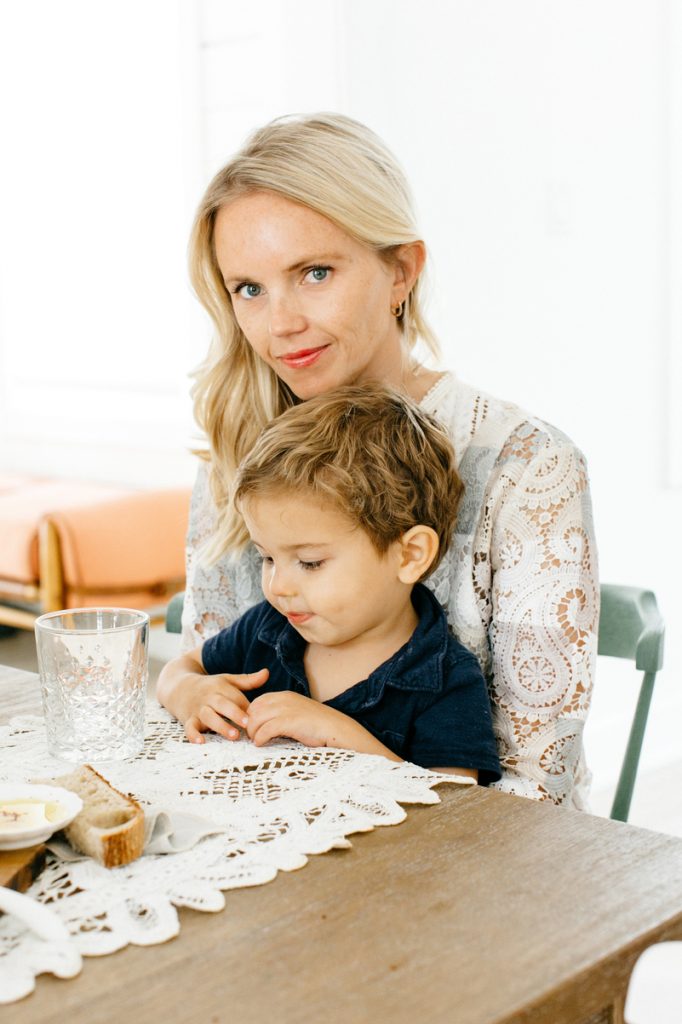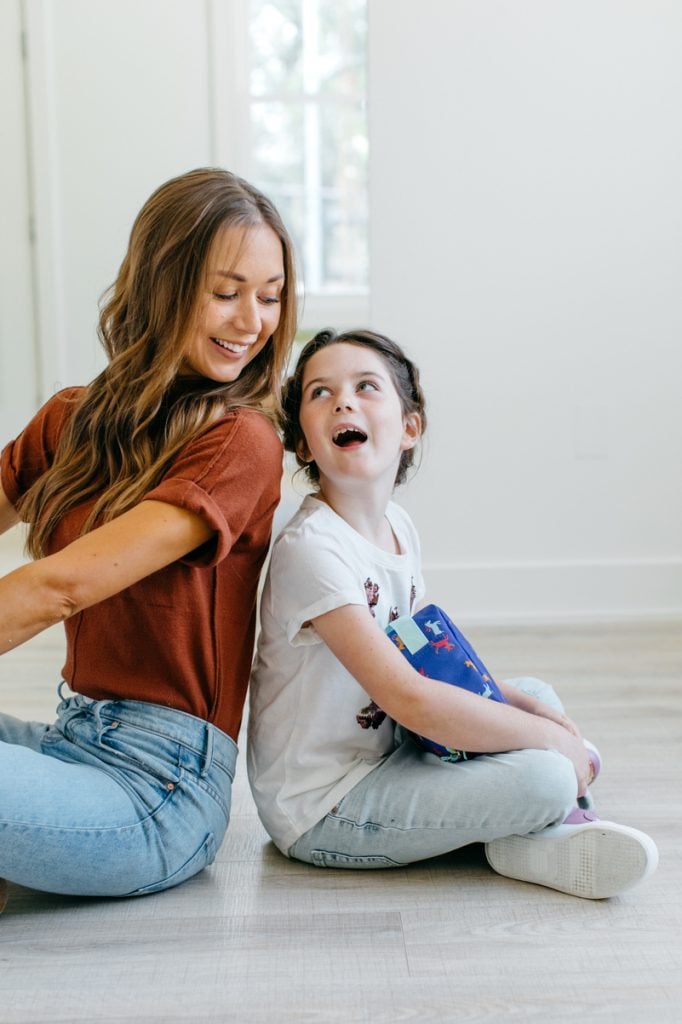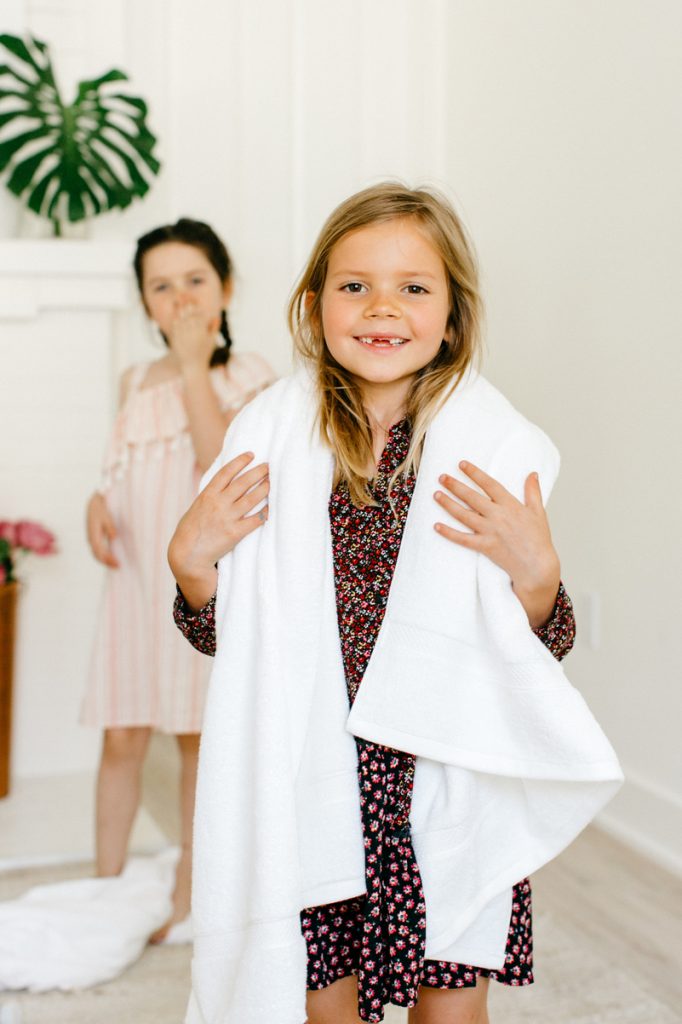In her new book, How to Raise Successful People, Esther Wojcicki says:
“Truly independent kids are capable of coping with adversity, setbacks, and boredom, all unavoidable aspects of life… Children who learn self-control and responsibility early in life are much better equipped to face the challenges of adulthood, and also have the skills to innovate and think creatively.”
This idea that independence is one of the most important values we can teach our children resonates deeply with me — it’s something I’ve felt intuitively since before I became a mom. But while there are some areas of life where we’re nailing it (Henry can dress himself and put on his shoes!) there are others where we could use an independence makeover (whenever the kids are thirsty, I have to go get them a glass of water since they can’t reach the filtered spout on our sink. Ugh, I know.)
The other day, my dear friend Anne Campbell was sharing how she’d organized her home kitchen so her kids could pack their own school lunches, as they’d been doing since they started elementary school.
Um, excuse me? A 5-year-old packed her own lunch? Yep, and her kids also make their own breakfast in the morning, help put away their laundry, and do numerous other tasks that many parents would assume are too hard, or (let’s be honest) feel like they would take too much time and effort to teach.
Since Anne is one of my favorite people to ask for advice — her answers are always specific, practical, and non-judgemental — I asked her to break down exactly how she sets up age-appropriate tasks for her three children to help them build independence. Her tips did not disappoint, and I’m feeling excited and hopeful about incorporating these ideas into our own house this fall. Read on for Anne’s toddler-to-preteen guide to building independence, and I’d love to hear in the comments about your struggles and successes with building independence.
*image by buff strickland
pictured above: Anne with her youngest son, Anders, image by kristen kilpatrick
Can you share your personal journey in teaching your kids to be more independent?
There’s an old saying that “necessity is the mother of invention,” and when I decided to rethink my approach to child-rearing, it was sudden and dramatic. I had become frustrated: no matter how hard I tried, I could not do everything for my children or clear away every obstacle from their path. The harder I tried, the more frustrated I became.
My husband saw what was happening and made a brilliant suggestion: why not encourage our children to help themselves?
It dawned on me at that moment that I could not, and should not, do everything for my children. For their own sense of self worth and self confidence, they had to learn to accomplish tasks on their own. That one change in approach has done wonders for my children and for my peace-of-mind.
We started with little changes, and each one made a huge difference. My children learned to climb into their own car seats and buckle themselves up. Prior to that change in routine, the difficulty of buckling in an uncooperative little one made the beginning of every car ride a nightmare. Now, when it’s time to saddle up, they eagerly climb into their seats, fasten their seatbelts and let me know when they are ready to go.
Step-by-step, task-by-task, they’ve learned how to be more independent and more helpful. We worked to put into practice our family version of the Golden Rule: “Help your family as you would want them to help you.” Can they help out by taking out the trash? Sure! Can they help out by making their own lunch? Absolutely! Each parent can create their own version of how to guide and train their child, but I am convinced that a healthy, cooperative team approach makes family life better for everyone.
Are there any misconceptions that parents/caretakers may need to get over in order to help their kids be independent?
Children instinctively feel their parents’ apprehensions, even if those apprehensions are not expressed openly. As parents, we know about risks that are part of every decision, so it is difficult to let go, to let our children become more independent. If we work diligently to guide our children, to identify the landmines and to sidestep them, to show them how to strive for something beyond what is safe, their independence and self-confidence will grow. They will inevitably fail at times but if they know that their parents trust them and are on their side no matter what the outcome, their confidence and independence will blossom.
Scroll on for Anne’s age-by-age ideas for building independence:
For a toddler:
With young children, start small and be patient! Here are a few things we’ve been working on at our house with our three-year-old son:
- Getting his own drinking water. We keep our toddler water cups, bottles and lids all on the bottom shelf in the kitchen, easily reachable for little hands. We have stepping stools by several of the sinks around the house so that he has easy access to the faucet.
- Cleaning up after dinner. We encourage him to scrape his own plate and to put his dirty dishes into the sink. When he is ready, our son will also learn learn how to load his dishes into the dishwasher.
- Buckling his car seat. He is learning to buckle himself into his seat when he gets into the car – starting with the top buckle (because it’s easier) and then he’ll learn how to do the bottom, as well. When the ride ends, he is also learning to unbuckle. Each parent will need to decide when their child has the strength and dexterity required for these tasks.
For a 4- to 7-year-old:
We are currently working with our seven-year-old daughter (pictured above) to accomplish the following:
- Getting herself up in the morning. She wakes up every morning to a basic alarm clock, which we purchased for her and showed her how to use. While my husband and I enjoy our first cup of coffee, she is getting herself ready for the day.
- Packing school lunch. We keep all of the food containers and lids within her reach in separately labelled bins. She assembles her lunch and then packs it in her lunch box with an ice pack. After school, she unpacks leftovers and disposes of any trash.
- Laundry and dishes. Kids this age are capable of doing much more to help with these chores. Speaking from my own unpleasant experience, don’t forget to teach your children the difference between dish soap and detergent (wink wink!).
For an 8 to 10-year-old:
Here are a few of the responsibilities we’ve given our nine-year-old daughter (pictured above at our mama-daughter beauty party):
- Babysitting while we’re home. Sometimes as a working mom, I need a minute to answer emails, texts or just to regroup, so I retreat to my bedroom while our oldest watches her siblings in the other room. They know if they need me, I’m just a room away.
- Completing her homework without being reminded. She is in fourth grade and averages about an hour of homework every night. She knows that we expect her to complete her homework immediately after coming home from school.
- Preparing the family meal. We gave each of our daughters a cookbook for kids and she researches meals (both in the cookbook and online), which she then prepares for our family. After she has made the meal, the entire family helps with clean up.
How do you handle (or avoid) situations when giving your kids more independence actually makes life harder for you?
My husband and I made a conscious decision to give our children the opportunity to become more independent, and that course of action is not always easy. It’s often frustrating, messy and imperfect. I hear an occasional complaint from one or more of my kids that I do not prepare and pack their lunches like all the other moms do, and other times I worry I’m being judged that their lunches are not picture perfect, “balanced,” and healthy. Sometimes an entire load of laundry will accidentally be dyed pink when my daughter leaves her new red tee shirt in with the whites.
Often it would be much easier to do a task myself rather than waiting for my children to complete it, but I try to remain resolute and patient. Every once in awhile, I may pack a school lunch or pick up dirty clothes, but that’s the exception. This process of teaching my children individual responsibility has been a learning process for all of us. Every day presents new challenges, and we have to remain flexible about our rules. It’s not a perfect system and never will be, but I’m convinced that our children are proud to be making their own contributions towards our family’s collective happiness.
***
Thanks for this incredible guide, Anne! Your smart and practical wisdom is always an inspiration to me, and I am so thankful that I get to walk through this mamahood experience by your side.
***
I’d love to hear from you guys in the comments: how have you fostered independence in your kids, and what have been your greatest challenges?











